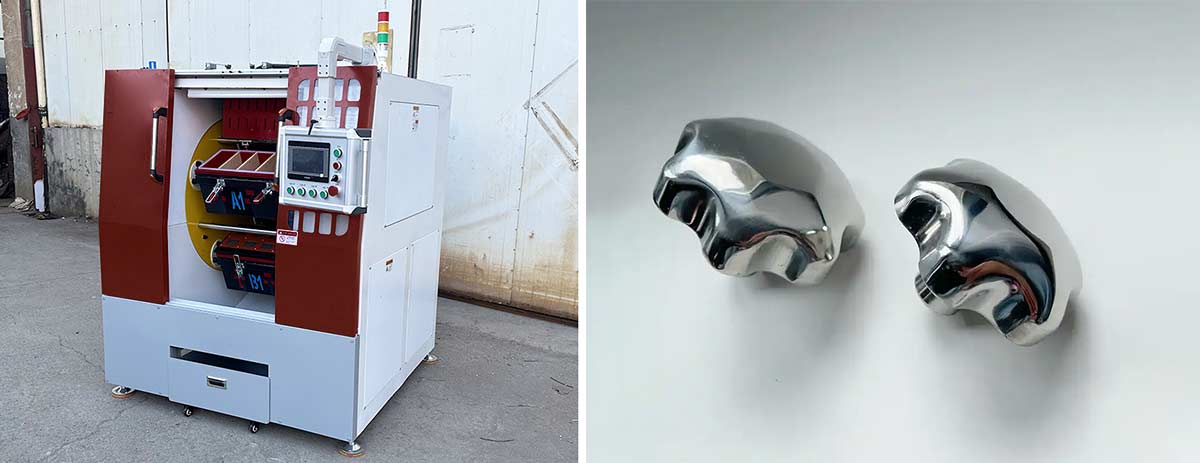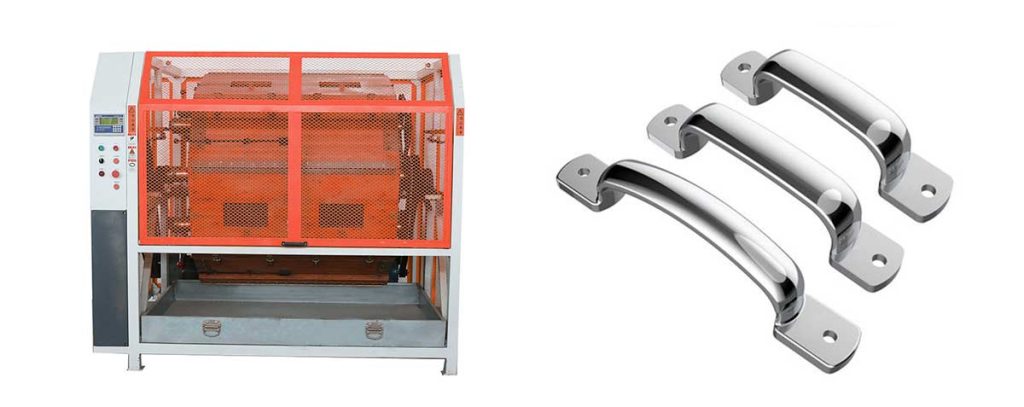

Metal polishes and surface coatings work together to transform metal surfaces into durable and visually appealing finishes. Metal polishes effectively remove impurities and restore shine, creating a smooth base for coatings to adhere to. These coatings then safeguard the surface from wear, corrosion, and environmental damage. Industries such as biochemical, petrochemical, and marine heavily depend on this synergy. For instance, biochemical equipment benefits from contaminant-free surfaces achieved through metal polishes service, while marine vessels gain corrosion resistance and extended lifespans. This collaboration ensures a superior surface finish that meets both functional and aesthetic demands.
| Industry | Benefits |
|---|---|
| Biochemical | Ensures equipment surfaces are free from contaminants, enhancing cleanliness and reducing cross-contamination risks with the help of metal polishes. |
| Petrochemical | Enhances safety and reliability by removing surface imperfections that could lead to corrosion or leaks through the use of metal polishes. |
| Marine | Protects vessels from corrosion, extending lifespan while enhancing visual appeal, thanks to the application of metal polishes. |
Key Takeaways
- Metal polishes clean metals and make them shiny again.
- Coatings protect metals from rust and damage, making them last longer.
- Car and boat industries use polishing and coatings for strong, nice-looking surfaces.
- Getting the surface ready helps coatings stick better and work well.
- Polishes and coatings together make metals work better and look great.
The Role of Metal Polishes in Surface Preparation
Metal polishes play a crucial role in preparing metal surfaces for further treatment. They ensure cleanliness, restore shine, and create an ideal base for coatings. This process is essential for achieving high-quality metal finishing.
Cleaning and Removing Impurities
Cleaning is the first step in surface preparation. Metal polishes remove dirt, grease, and other contaminants that accumulate over time. This step is vital for industries like food processing and pharmaceuticals, where cleanliness and hygiene are critical. Polished surfaces are easier to clean, reducing the risk of contamination. Additionally, removing impurities prevents defects in the final metal finishing process. For example, solvent cleaning effectively eliminates oils and organic residues, ensuring a pristine surface.
Smoothing and Restoring Shine
Metal polishing enhances the surface by smoothing out imperfections and restoring its natural shine. This step improves both functionality and aesthetics. A smooth surface reduces friction, which is beneficial for moving parts in machinery. In decorative applications, the shiny finish adds visual appeal. Furthermore, polishing can increase electrical conductivity by creating a flawless surface, which is essential in electronics. Precision finishing ensures components meet exact specifications, a necessity in industries like aerospace and medicine.
Preparing the Surface for Coatings
Proper preparation is key to ensuring coatings adhere effectively. The process begins with inspecting and cleaning the surface to remove contaminants. Rust and corrosion are eliminated using methods like sanding or abrasive blasting. Choosing the right preparation method depends on the type of metal and the desired finish. Finally, the surface must be completely dry before applying coatings. These steps ensure the coating bonds well, enhancing durability and performance. A well-prepared surface leads to superior metal finishing, extending the lifespan of the treated metal.
The Importance of Surface Coatings for Metal Protection
Surface coatings play a vital role in protecting metal surfaces from environmental and mechanical damage. They enhance durability, improve aesthetics, and add functional properties, making them indispensable in metal finishing processes.
Enhancing Durability and Resistance

Surface coatings significantly improve the durability of metals by forming a protective barrier. This barrier prevents oxidation and corrosion caused by moisture, chemicals, and other environmental factors. For example, galvanizing coats steel with zinc, offering excellent corrosion resistance. Similarly, anodizing strengthens aluminum by enhancing its natural oxide layer. These methods ensure that metals withstand harsh conditions, reducing wear and tear.
Coatings also provide abrasion resistance, protecting surfaces from scratches and impacts. Hard chrome plating, for instance, deposits a layer of chromium that resists both corrosion and mechanical damage. By extending the lifespan of metal components, coatings reduce maintenance costs and improve reliability in applications like automotive and construction.
Improving Aesthetic Appeal
Surface coatings elevate the visual appeal of metal products. They allow for color customization, enabling unique designs and patterns. Decorative coatings transform ordinary surfaces into artistic elements, while texture variations, such as matte or satin finishes, add depth and sophistication.
Advanced coatings also enhance functionality while maintaining aesthetics. Anti-fingerprint coatings repel smudges, keeping surfaces like smartphones and kitchen appliances pristine. Self-healing coatings repair minor scratches, ensuring a flawless appearance over time. These features make surface coatings essential in industries where both form and function matter.
Adding Functional Properties
Beyond protection and aesthetics, surface coatings introduce specialized properties to metals. Hydrophobic and oleophobic coatings repel water and oil, keeping surfaces clean and dry. Anti-reflective coatings reduce glare, improving visibility on glass surfaces. In industrial applications, manganese phosphate coatings provide wear resistance, while electroless nickel plating ensures uniform corrosion resistance.
These functional enhancements optimize the performance of metal products. For instance, coatings used in electronics improve conductivity and prevent oxidation. In the aerospace industry, they reduce friction and enhance heat resistance. By tailoring coatings to specific needs, manufacturers achieve superior metal finishing results.
The Synergy Between Metal Polishes and Surface Coatings
Achieving a Durable Surface Finish
Metal polishes and surface coatings work together to create a durable surface finish that withstands environmental and mechanical challenges. Polishing removes imperfections and smooths the surface, ensuring coatings adhere effectively. For example, a metal polishing machine can achieve a high-gloss finish by using abrasives or chemicals. This process enhances both the appearance and corrosion resistance of the metal.
Surface coatings, such as powder or liquid coatings, add a protective layer that resists chipping, corrosion, and wear. Powder coating applies charged powder to the surface, which is then cured for a long-lasting finish. Liquid coatings, on the other hand, offer flexibility in color and texture, making them ideal for decorative applications. Electrostatic coatings ensure even coverage and strong adhesion, reducing waste while providing robust protection. Together, these processes ensure the metal finishing achieves maximum durability and reliability.
| Process Type | Description | Benefits |
|---|---|---|
| Polishing | Uses abrasives or chemicals for a high-gloss finish. | Enhances appearance and corrosion resistance. |
| Powder Coating | Applies charged powder and cures it for a durable finish. | Resists chipping and corrosion. |
| Liquid Coating | Applies traditional paint for protection and aesthetics. | Offers flexibility in color and finish. |
| Electrostatic Coating | Uses electrostatic charge for even coverage and strong adhesion. | Reduces waste and provides long-lasting protection. |
Enhancing Visual and Textural Qualities
The combination of metal polishes and surface coatings significantly improves the visual and textural qualities of metal surfaces. Polishing restores the natural shine of metals, creating a smooth and reflective surface. This step is essential for achieving a flawless base that enhances the final appearance of the coating.
Surface coatings further elevate the aesthetic appeal by offering a variety of finishes, including matte, satin, and glossy textures. They also allow for color customization, enabling unique designs that suit specific applications. For instance, decorative coatings transform ordinary metal into visually striking elements used in architecture and consumer goods. The synergy between polishing and coating ensures the surface finish meets both functional and aesthetic requirements.
Optimizing Performance and Longevity
Metal polishes and surface coatings optimize the performance and longevity of metal products. Polishing eliminates surface defects, reducing friction and wear in moving parts. This step is crucial in industries like automotive and aerospace, where precision and durability are paramount.
Coatings add specialized properties that enhance the functionality of metals. Hydrophobic coatings repel water, while anti-reflective coatings improve visibility. In industrial settings, coatings like manganese phosphate provide wear resistance, while electroless nickel plating ensures uniform corrosion protection. By combining these processes, manufacturers achieve superior metal finishing that extends the lifespan of metal components and improves their overall performance.
Real-World Applications of Polishes and Coatings
Automotive and Transportation
Metal polishes and coatings play a vital role in the automotive and transportation industries. Polishing enhances the appearance of vehicles by creating a mirror-like finish that improves visual appeal. It also increases resistance to corrosion and wear, ensuring long-lasting performance. For example, a metal polishing machine can refine surfaces to achieve a flawless shine, which is essential for high-end automotive designs.
Surface coatings further protect metal components from environmental damage. In the trucking industry, polished stainless steel is commonly used on tractor trailers. This material withstands harsh weather conditions, improving both durability and appearance. The combination of polishing and coatings ensures that vehicles maintain their functionality and aesthetic appeal over time.
| Application Area | Description |
|---|---|
| Automotive Industry | Metal polishing enhances both aesthetics and functionality, providing a mirror-like finish that improves visual appeal and resistance to corrosion and wear. |
| Trucking Industry | Polished stainless steel is used on tractor trailers to enhance durability and withstand harsh weather, improving longevity and appearance. |
Architecture and Construction

In architecture and construction, polished and coated metals contribute to both structural integrity and design. Polishing removes imperfections, creating smooth surfaces that enhance the overall aesthetic of buildings. Coatings add a protective layer, preventing corrosion and extending the lifespan of metal components exposed to the elements.
Architectural elements like railings, facades, and decorative panels often feature polished finishes. These surfaces not only look elegant but also resist wear and tear. Coatings, such as powder coatings, provide additional benefits like color customization and texture variations. This combination of processes ensures that metal finishing meets the high standards required in modern construction projects.
Consumer Goods and Electronics
Metal polishes and coatings are indispensable in the production of consumer goods and electronics. Polished finishes improve the appearance of household appliances, making them more appealing to consumers. For instance, brushed and satin finishes are frequently applied to kitchen appliances. These finishes enhance aesthetic appeal while offering practical benefits like ease of cleaning and resistance to fingerprints.
Coatings further enhance the functionality of these products. Powder coatings are commonly used on refrigerators, ovens, and washing machines to provide a durable and attractive finish. Electroplating adds a decorative touch to items like faucets, light fixtures, and tableware. Together, these processes ensure that metal finishing delivers both beauty and practicality.
| Type of Finish | Application Examples |
|---|---|
| Powder Coating | Household appliances like refrigerators, ovens, and washing machines. |
| Electroplating | Decorative items such as faucets, light fixtures, and tableware. |
- Brushed and satin finishes are commonly applied to kitchen appliances.
- These finishes enhance aesthetic appeal and provide practical benefits like ease of cleaning and resistance to fingerprints.
Conclusion
Metal polishes and surface coatings form a powerful combination that enhances the durability, functionality, and appearance of metal surfaces. Their collaboration ensures long-lasting results across industries. For example, the biochemical and pharmaceutical sectors rely on polished and coated equipment to maintain cleanliness and withstand chemical exposure. The marine and automotive industries benefit from corrosion resistance and improved aesthetics. A metal polishing machine plays a key role in achieving these outcomes by creating smooth, defect-free surfaces.
| Industry | Application |
|---|---|
| Biochemical | Ensures equipment surfaces are free from contaminants and can withstand chemical exposure. |
| Marine | Protects vessels from corrosion and enhances visual appeal with polished finishes. |
| Automotive | Improves aesthetic appeal and resistance to environmental factors on components like wheels and trim. |
| Pharmaceutical | Maintains cleanliness and sterility in drug manufacturing equipment. |
This synergy between polishing and coatings ensures that metal surfaces meet the highest standards of performance and aesthetics, making them indispensable in modern applications.
